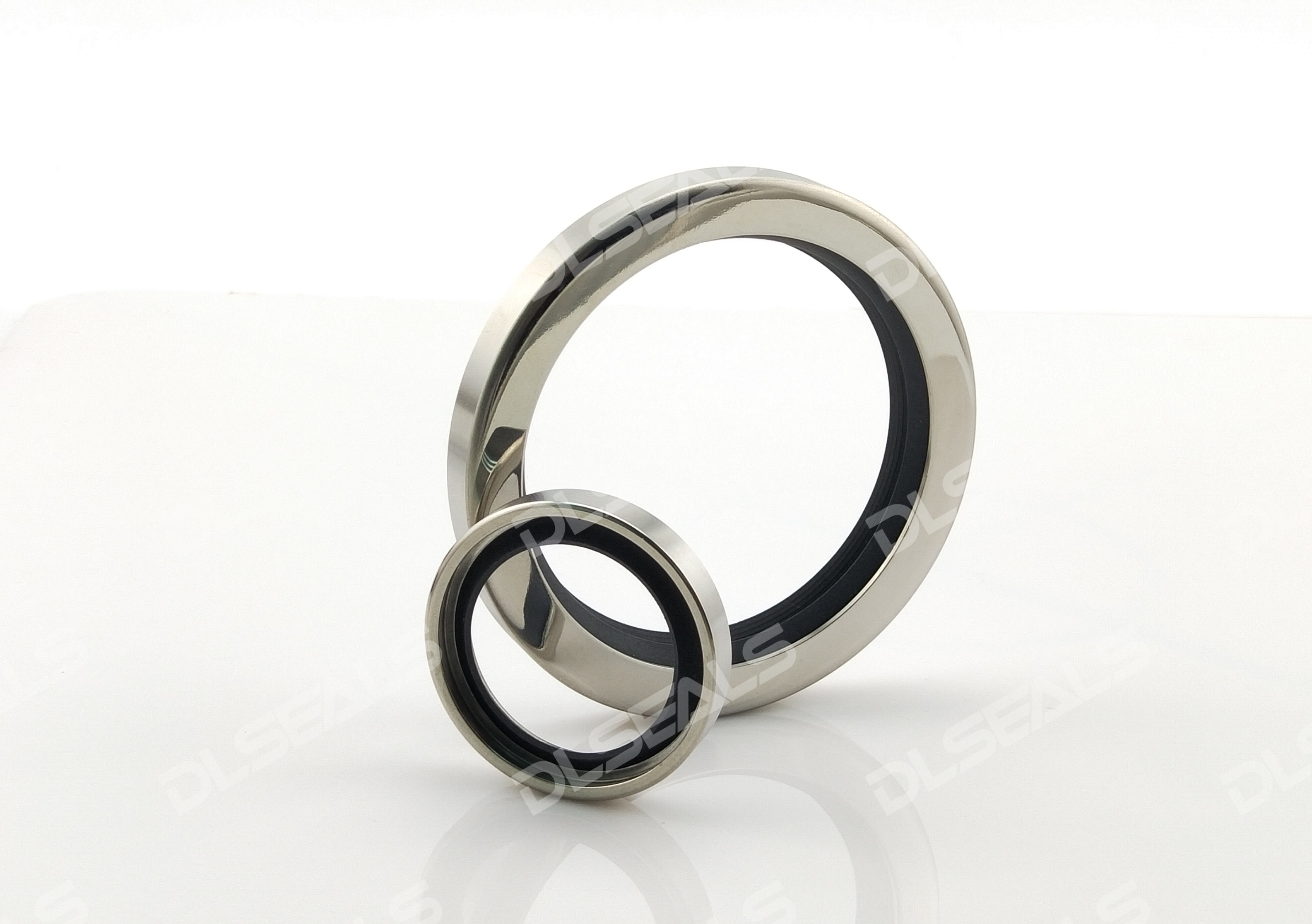In industrial rotary sealing applications, the single-lip oil seal (single-lip radial shaft seal) serves as a core component for preventing fluid leakage and excluding contaminants under medium-speed, low-pressure conditions. Combining a chloroprene rubber (CR) sealing lip and a metal case, this design delivers a reliable, cost-effective sealing solution. This article comprehensively analyzes its structure, performance, and applications.
I. Structure: Metal Case and CR Lip Synergy
- 1.Metal Case:
- •Function: Provides rigidity, ensuring dimensional stability during press-fitting and static sealing with housing bore (interference fit).
- •Material: Low-carbon steel (SPCC) or galvanized steel (stainless SUS304 for corrosive environments).
- •Design: L-shaped cross-section; knurled/serrated OD surface or bonded coating (rubber/epoxy) enhances anti-rotation.
- •Edge Rolling: Rolled lip edge anchors rubber, preventing peel-off under pressure.
- 2.Single-Lip CR Seal Body:
- •Primary Lip: Forms dynamic sealing interface with shaft surface.
- •Interference: Lip ID < shaft diameter (0.2–0.6 mm typical).
- •Contact Width: Narrow sealing band (0.1–0.5 mm) balances sealing and friction.
- •Auxiliary Features:
- •Helical Ribs: Machined on air-side (atmospheric side) surface. Critical for pump-back effect—returns leaking oil to sump. Direction (left/right spiral) must match shaft rotation.
- •Garter Spring: Stainless steel spring (SUS304) in lip groove maintains radial force against shaft eccentricity, wear, or thermal relaxation.
- •Dust Lip (Optional): Secondary lip (no spring) blocks external contaminants (dust/water). Strongly recommended for construction/agricultural equipment.
- •Core Material: Chloroprene Rubber (CR):
- •Oil Resistance: Good resistance to mineral oils, lubricants, hydraulic fluids (better than NR; slightly inferior to NBR).
- •Weather/Ozone Resistance: Excellent (superior to most general elastomers).
- •Temperature Range: **–40°C to +120°C** (continuous); short-term to 150°C.
- •Flame Resistance: Self-extinguishing (chlorine content).
- •Water/Weak Chemical Resistance: Good.
- •Mechanical Properties: Strong tensile strength, abrasion, and tear resistance; moderate compression set.
- •Primary Lip: Forms dynamic sealing interface with shaft surface.
II. Key Advantages & Applications
- 1.Cost-Effective: Simple tooling + low-cost materials enable mass production.
- 2.Reliable Sealing: Effective under ≤12 m/s shaft speed and ≤0.5 MPa pressure. Ideal for gearboxes, bearings.
- 3.Environmental Suitability: CR resists UV, ozone, oxidation—ideal for outdoor equipment near motors/transformers.
- 4.Contaminant Exclusion: Optional dust lip enhances protection.
- 5.Typical Applications:
- •Automotive: Transmissions, differentials, wheel hubs, steering gears, water pumps (low-temp).
- •Industrial: Gear reducers, pumps, blowers, conveyor rollers, electric motors, compressors.
- •Appliances: Washing machine bearings, power tools.
- •Heavy Equipment: Hydraulic cylinder rods, axle bearings (with dust lip).
III. Performance Limits
- 1.Max. Temperature: 120°C—Exceeding causes hardening/cracking.
- 2.Min. Temperature: **–40°C**—Higher than silicones/FKM.
- 3.Polar Fluid Weakness: Avoid ketones, esters, phosphate-ester hydraulic fluids, strong acids.
- 4.Swelling Risk: Inferior to NBR/HNBR in EP gear oils or synthetic fluids.
- 5.Pressure Limit: ≤0.5 MPa—Higher pressure distorts lip.
- 6.Speed Limit: ≤12 m/s—High speed increases friction/heat.
IV. Selection Criteria
- 1.Shaft/Housing Bore: Match dimensions per ISO/GB standards.
- 2.Media Compatibility: Confirm compatibility with oils/greases. Avoid fuels/polar solvents.
- 3.Temperature: Ensure peak ≤120°C; below –30°C risks brittleness.
- 4.Shaft Speed: Calculate speed v=60,000π×D×n m/s (D: mm, n: rpm).
- 5.Environment: Select dust lip version for dirty/wet conditions.
- 6.Installation Prep:
- •Shaft: Chamfer ≥15°×1 mm; hardened surface; roughness Ra 0.2–0.8 μm; hardness ≥30 HRC.
- •Bore: Tolerance H7/H8; chamfered edges; roughness ≤ Ra 3.2 μm.
- •Tools: Use sleeves/arbors—never hammer directly! Lubricate lip/shaft before fitting.
V. Installation & Maintenance
- 1.Pre-install Check: Inspect seal/shaft/bore; verify spring direction (left-hand spiral for CW rotation).
- 2.Lubrication: Apply system oil/grease to lip/shaft.
- 3.Press Direction: Apply force only to metal case back—never on rubber lip!
- 4.Mounting Speed: Press evenly at controlled speed.
- 5.Post-install Test: Hand-rotate shaft to confirm smooth operation.
- 6.Leak Monitoring: Minor initial weep is normal (oil film formation); persistent drips indicate failure.
VI. Failure Analysis
| Failure Mode | Root Cause |
|---|---|
| External Leakage | Lip wear/cracking, shaft damage, improper install, housing loose, overpressure |
| Lip Burn-Dry | Excessive friction (misalignment, overspeed), reversed helical ribs |
| Lip Torn/Flipped | Incorrect install, insufficient shaft chamfer, brutal mounting |
| Case Corrosion/Loosen | Wet/corrosive environment, uncoated metal case |
| Rubber Swelling | Media incompatibility, excessive heat (>120°C) |
Conclusion
The CR single-lip metal-cased oil seal is an economical standard for sealing mineral oils/greases in medium-speed applications (–40°C to +120°C). Its metal case ensures robust installation, CR lip balances sealing and environmental resistance, while the helical ribs provide active sealing. For dusty/wet environments, the dust-lip variant is essential. Always respect material/temperature boundaries—upgrade to HNBR/ACM/FKM for extreme temperatures, high speeds, or aggressive media. Precision installation and maintenance are critical for long-term reliability.
Post time: Aug-08-2025

